10 Questions With Scott Todd (Part II)
Yesterday, Scott introduced our Complementary Interventions (CIV) program, and today he discusses his goals for CIV.
6. So would you say that CIV benefits the churches?
Absolutely. I believe that Complementary Interventions are one way we are equipping the Church to be the Church. Any of our 4,500 church partners can submit a proposal for a CIV grant. They assess the needs of the community, develop a strategy, and propose that strategy to us. They are then able to implement their solution in a way that blesses the entire community.
7. Besides the church, does CIV utilize any other partnerships in the field?
Often, other nongovernment organizations are in the field, doing things well that we can’t do. For example, Opportunity International is a wonderful ministry that provides financial services to the poor. We knew very early on that our partner churches should not become financial institutions. But by partnering with Opportunity International, we are able to network, to get the word out to the parents of our registered children, and to help them.
Partnership done right is a kingdom principle. We need to work with other organizations that are great at what they do so we can help as many people as possible.
8. How did you get involved with Complementary Interventions?
With my medical background, I first became involved with CIV through the AIDS Initiative. More importantly though, I was drawn to CIV because I completely believe in the mission of holistic child development. So many forces are conspiring against children in poverty. I wish $32 a month was enough to battle all of those forces, but more often than not, it isn’t. I just think about my own family. If I could pay for my son’s school fees, but couldn’t provide the medical care he needed, then it isn’t good enough.
9. What are some of your goals for CIV?
I would ultimately like to see CIV allowing us to care for each child registered with Compassion as we would care for our own sons and daughters. I don’t want to see them suffer unnecessarily. I want them to realize their God-given potential. I would like Complementary Interventions to become seamlessly integrated with each of Compassion’s core strategies.
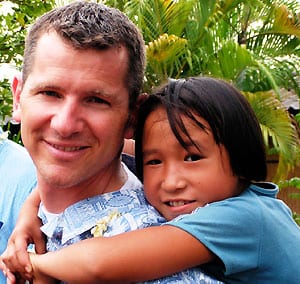
10. Tell me about a time you’ve seen CIV work well.
I’ve seen so many examples of CIV working that it’s hard to talk about just one. There is one that may surprise some people about how CIV works, though. I heard about a boy in Kenya, whose brother was in our Child Sponsorship Program. This boy had already lost one eye to glaucoma, and the disease was rapidly taking his other eye. But because this little boy wasn’t sponsored, he couldn’t receive the medical care he needed. But what his family didn’t know was that a small allotment of CIV can be used for the medical needs of registered children’s families. So the church stepped in, asked for CIV funding, and now that boy, who would have gone blind, can see.
10 Questions With Scott Todd, Special Operations Director
This week we continue our 10 Questions series on Compassion’s holistic child development model with Brandy’s interview with Dr. Scott Todd, Special Operations Director for Compassion.

Compassion’s Complementary Interventions (CIV) activities, which include the AIDS Initiative, are headed by Scott Todd. Scott, a pediatric AIDS expert, is passionate about meeting each and every need of the children served by Compassion. Recently, he shared how he sees CIV accomplishing that goal.
1. What is CIV?
CIV is Compassion’s Complementary Interventions program. To be honest, we played around with a lot of titles for this program. Complementary seems like a weak word for such a strong program. But it really does describe what CIV does — it complements, completes our core mission of releasing children from poverty in Jesus’ name. In essence, CIV ensures that we are able to go the distance, to provide everything that’s necessary for children registered in our program. While $32 a month goes a very long way in developing countries, there are still unexpected needs. Homes are destroyed in floods. Children need expensive AIDS treatment. All things that exceed that $32 a month. That’s where Complementary Interventions come in.
2. What are some of the specific ways CIV complements Compassion’s core ministries?
Complementary Interventions are woven throughout Compassion’s Child Development Model. In the Child Survival Program, for example, Complementary Inventions provide medication for HIV-positive mothers that decrease their chances of passing the virus on to their unborn children. In the Child Sponsorship Program, I have seen CIV cover the medical costs of a child’s open-heart surgery, as well as covering his travel to a state-of-the-art hospital in another country. Because of the AIDS Initiative, an arm of CIV, church partners can put on training events in their communities, teaching families about awareness. Complementary Interventions exist to strengthen our other programs, and I’ve seen it work. Literally thousands of kids would not be alive were it not for CIV.
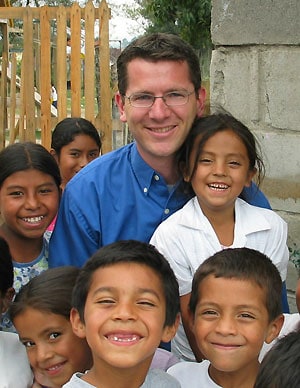
3. Does CIV target different donors than our other programs?
First of all, a lot of people who give to CIV are already sponsors. But, I also believe that CIV is reaching a different group as well. Let’s say you have someone who feels very passionate about the AIDS crisis or about eradicating malaria. That person may never feel led to be a sponsor — that doesn’t connect with them. But through Complementary Interventions, they can give to what they’re passionate about. Not only can they give, but once they do, we can show them how it’s working. It’s a new, exciting point of initiation for Compassion.
4. How do Complementary Interventions differ from a community development program?
In each of our programs, including CIV, Compassion focuses on child development — not community development. By focusing on early childhood, we are often able to change a child’s life before fatalism, before he or she experiences stunted growth from disease, before that child gets behind in school. We believe that a changed child will transform his or her community.
5. Does sponsorship ever cover things like building wells, etc.?
Sponsorship funds directly benefit a specific child. We believe a sponsor’s money should benefit that individual child in a way we can document. But as I said before, sometimes that sponsorship amount of $32 a month isn’t enough, especially for children suffering from AIDS or other medical problems. But Complementary Interventions are also used to indirectly help children. If children are dying from lack of clean water, a church can ask for CIV funds to dig a well. This clean water will absolutely help the children at that center — but since it is indirect, that funding will come from CIV, rather than sponsorship.
Come back tomorrow for the rest of Brandy’s interview with Scott.
Read all the posts in the 10 Questions series.
Brandy Campbell is a feature writer at Compassion International. When she’s not chatting with Compassion execs, Brandy writes newsletter and web stories about Compassion’s ministry to children in poverty.
Ready, Set, Run!
In Junior High School, I adopted 1 Corinthians 9:24 as my favorite Bible verse. Want to know what it says?
“Do you not know that in a race all the runners run, but only one gets the prize? Run in such a way as to get the prize.” (NIV)
I think I took it out of context to fit my needs as an ambitious track runner, but nonetheless, it’s something I’ve held on to for many years and often recite in my head.
Want to know why I’m sharing this with you, my friends? Well, a group of Compassion employees are getting ready to run a 10K Race called the Bolder Boulder. It takes place annually on Memorial Day in the city of Boulder. Last year there were nearly 50,000 registered runners! This year the race will be on May 26 and we are hoping to get 100 Compassion employees registered for the race.
So, while the scripture is a little out of context, we are still running with a prized goal in mind. As Compassion employees, our goal for this Memorial Day race is to run in memory of the 28,000 children who die daily from preventable causes due to poverty.
If you live in Colorado, or plan to be in the area that weekend, please come and run with us! We would love to have your support in sharing the advocacy message of Compassion.
10 Questions With Mike Hinckfoot, Leadership Development Ministry Director
This week we continue our 10 Questions series on Compassion’s holistic child development model with Brandy’s interview with Mike Hinckfoot, Compassion’s Leadership Development Ministry Director.

Compassion’s Leadership Development Program (LDP) uniquely equips hundreds of outstanding young leaders to transform their communities, their countries and their world. Mike Hinckfoot, Compassion’s Leadership Development Ministry director since 2004, recently shared with me his passion for young adults and his vision for the Leadership Development Program.
1. What is the Leadership Development Program?
The Leadership Development Program identifies and provides opportunities for outstanding Christian young men and women who are graduates of our Child Sponsorship Program. The tagline is “Educating, training, discipling servant leaders.” It’s about college students, who, when they came into Compassion’s program maybe 18 years ago, had no dreams, but now they do.
2. What does “Educating, training and discipling servant leaders” look like?
Well, the education part is pretty simple. Each LDP student enrolls in college in their home country, where they will receive a bachelor’s degree, thanks to the support of their LDP sponsor. As far as training, each LDP student takes part in a holistic curriculum based on Compassion’s leadership principles. It’s a three to four year training program. And for discipleship, we connect every LDP student with a local church, where they are actively involved in getting to know their pastor, maybe teaching Sunday school. Discipleship also comes through mentoring. Every LDP student has a mentor, someone of the same gender, hopefully in the same career path that they are to walk with them side by side. They also have an LDP specialist, kind of a guidance counselor, someone who is helping them develop in their plans for the future.
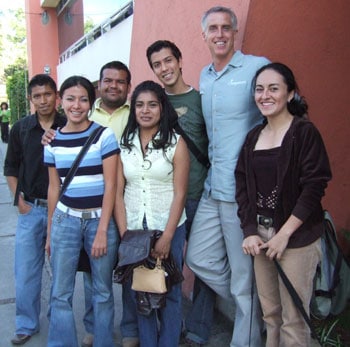
3. What is the LDP sponsor’s role in their sponsored student’s life, beyond covering the cost for their education?
The sponsor is essential to the success of the program. Our students are linked to a sponsor and our hope is that to take a sponsor from being an encourager to being a distant mentor, to being a coach for them — for now and for the future. I can say without question that I know of no other program like LDP in the world. Sponsors are touching the future by being a champion for these bright, talented students. They are, quite literally, changing the future through their sponsorship.
4. The Bible is full of verses about helping children, the orphaned and those who are alone. What do you think the Bible says about the young adults who apply for LDP?
One key passage for LDP is 1 Timothy 4:12, a verse that declares the value of young adults from God’s perspective. Paul, a mentor to Timothy, encourages him, saying, “Don’t let anyone look down on you because you are young, but set an example for the believers in speech, in life, in love, in faith and in purity.” In other words, God is calling young adults to assume great roles of leadership. They should pursue this confidently. And the Leadership Development Program is one way the Church can see that it happens.
5. Many developing countries offer very little support for women seeking an education — and some are, in fact, hostile towards these women. What is LDP doing to help women enrolled in the program?
I’ve done a lot of research on women and education in developing countries, and the more I learn, the sicker this situation makes me. For example, we learned that young ladies enrolled in LDP in Nairobi were being harassed by young men in the computer lab. Even worse, young ladies were failing university because they would not have an affair with their professors. We do everything we can to support these young women. We are giving them a chance for an education, yes. But our support doesn’t end there. We fight for them, against injustice. We give them a voice. We give them power. We give them hope.
Come back tomorrow for the rest of Brandy’s interview with Mike.
Read all the posts in the 10 Questions series.
Brandy Campbell is a feature writer at Compassion International. When she’s not chatting with Compassion execs, Brandy writes newsletter and web stories about Compassion’s ministry to children in poverty.
10 Questions With Mark Peters (Part II)
Yesterday, Mark shared about what child sponsorship is through Compassion and how it has evolved over the past 55 years. Today, Mark answers the question “Why Compassion?”
6. There are a lot organizations who use child sponsorship to fight poverty. What makes Compassion’s Child Sponsorship Program unique?
Compassion is Christ centered, child focused, church based, and committed to integrity. All of our core programs are holistic. We also value the dignity of all people and endeavor to uphold high standards of stewardship and excellence. The Child Sponsorship Program focuses on the long-term spiritual, physical, socio-emotional development of children from age 3 up to 22. It is during those years that children develop their self-image, acquire knowledge and skills that can help them become financially self-sufficient, and develop good health habits. It is also during the childhood and adolescent years that the majority of Christians come to know Christ as their personal Savior and Lord.
7. So, why Compassion? Why should someone choose Compassion instead of another ministry that helps children?
Compassion sponsors often tell me that they chose to partner with Compassion after researching several different organizations. They want to work with an organization that shares their Christian values and convictions.
8. Compassion focuses on development, not relief. Why? What is the difference?
Providing relief to victims of natural and man-made disasters is necessary, and several organizations do that well. However, Compassion’s area of expertise is long-term child development. We believe that children need sustained nurture and instruction to develop into the men and women God desires them to be. Additionally, our Complementary Inventions activities assist children with any special needs they may have along the way including disaster relief.
9. Most sponsorship organizations place less emphasis on the one-to-one connection and more on the physical resources provided through monthly gifts. Why does Compassion focus on that relationship, specifically through letter-writing?
After 55 years, we have begun placing a greater emphasis on the role sponsors can play in encouraging their sponsored child through letters, gifts and visits. Sponsors have a unique opportunity to speak into the lives of the children they sponsor. They have the special opportunity to bring children to Jesus through their words of encouragement and by sharing their testimony of God’s faithfulness in their own lives. They can speak words of life, love and hope into the lives of children.
I have seen firsthand how this relationship can be transformational for children and sponsors.
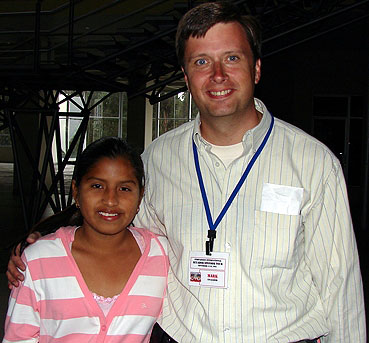
10. What’s your favorite Child Sponsorship Program success story?
Lillian is a wonderful example of a young person whose life was dramatically changed as a result of being in Compassion’s program. Lillian’s mother died when she was 3 months old, and her father died just two years later. Then, her guardians abused her. But one day Lillian was spotted by Patrick, the director of a Compassion-assisted center near her uncle’s house, and she was registered in the Child Sponsorship Program. This was a critical turning point in Lillian’s young life. She went on to attend college through the Leadership Development Program, and now she is a full-time staff member in the Compassion Uganda office.
As I think about all the twists and turns in Lillian’s life and her amazing story, it is impressed upon me that she is a product of her participation in Compassion’s Child Sponsorship Program. Lillian tells me, “I am a living testimony. I would have never seen my value in life if it were not for Compassion.”
10 Questions With Mark Peters, Vice President of Ministry Integration & Innovation
This week we continue our 10 Questions series on Compassion’s holistic child development model with Brandy’s interview with Mark Peters, Compassion’s Vice President of Ministry Intergration & Innovation.

The Child Sponsorship Program (CDSP) is Compassion’s flagship program. For more than 55 years, Compassion has paired children in poverty with loving, supportive sponsors who provide for their physical needs. But in those 55-plus years, the Child Sponsorship Program has evolved into a holistic program — one that releases children from spiritual, economic, social and physical poverty. Mark Peters, who oversees the work of the Child Sponsorship Program, shares how Compassion has evolved — and where it is heading.
1. What is child sponsorship through Compassion?
The goal of child sponsorship is to release children from poverty in Jesus’ name. We do this by linking one child with one sponsor for the purpose of enriching both lives. For children, this involves the opportunity to participate in a program designed to address their spiritual, physical, cognitive and socio-emotional development. For sponsors, this involves the opportunity to be a blessing to a child in need. Sponsors and children also have the opportunity to write letters to each other and learn more about one another.
2. How has God uniquely equipped you to work with Compassion’s Child Sponsorship Program?
Ministry to children has always been a part of my life. Even as a child, I was involved in our church’s bus ministry, inviting children to ride the bus to church every week. This passion for ministry to children continued when I spent time in California, overseeing a Nazarene sponsorship program, as well as throughout my 16 years of service with Compassion.
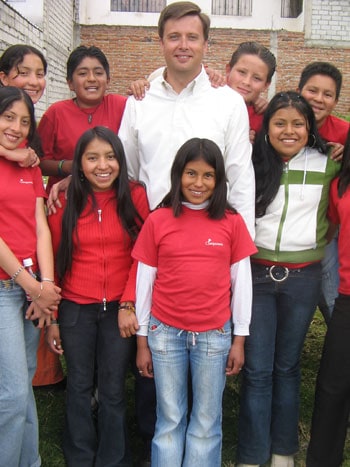
As a former pastor, I strongly believe that God has established and commissioned the Church to minister to the poor and suffering in our world. Compassion partners with more than 4,500 local churches in 25 developing countries to help children become responsible and fulfilled Christian adults. This partnership with the Church is what drew me to Compassion.
4. Tell me more about this partnership with churches. How does this relationship benefit the church? How does it benefit Compassion?
The churches we partner with have a passion to change their communities for Christ. They understand that children are not only the Church of tomorrow but they are also the Church of today. Compassion plays an important role in providing local churches in developing countries with a significant share of the resources (financial and training) they need to realize the vision God has given them. Our church partners also play an important role in providing the information Compassion needs to acquire and engage sponsors in their ministry to sponsored children.
5. What new things is the Child Sponsorship Program doing that we weren’t doing 55 years ago?
Compassion’s program models have changed over the years. We have transitioned from “family helper” type projects to church school projects to child development centers that are focused on children. We are very intentional about the program being holistic. Wess often says, “An empty stomach has no ears.” We work with our church partners to address the needs of the whole child — physical, social, spiritual and economic.
We are working to challenge and equip sponsors to be advocates not only for their sponsored children but for children in general.
We have also implemented new technologies, such as digital cameras and a system to capture child information in field offices, in order to increase efficiency and minimize administrative costs.
Come back tomorrow for the rest of Brandy’s interview with Mark.
Read all the posts in the 10 Questions series.
Brandy Campbell is a feature writer at Compassion International. When she’s not chatting with Compassion execs, Brandy writes newsletter and web stories about Compassion’s ministry to children in poverty.
10 Questions With Emily Kagiri (Part II)
Yesterday, Emily shared how God revealed His call on her life and what makes our Child Survival Program (CSP) unique among programs that work with infants and mothers. Today, Emily shares her vision for CSP.
6. In addition to the countries where CSP is already in place (Dominican Republic, Ecuador, Ethiopia, Haiti, India, Kenya, Peru, Philippines, Thailand and Uganda) what are some countries where you would like to see the program expand to?
Compassion works in developing countries, most of which have high child mortality rates. As I look into the 2006 international statistics on infant mortality, the countries I would hope to see us in are Rwanda, Burkina Faso, Togo* and Tanzania. However, it is very important for us to have reports on infant mortality in all the countries where we work. This will give us direction regarding which countries need priority.
7. Child mortality is a huge problem in developing countries. Do you think the Child Survival Program is having a real impact on this crisis?
Definitely. The CSP beneficiaries are mothers and babies, who are vulnerable in various ways as families live in varying difficult circumstances. If it were not for the Child Survival Program, many children who were malnourished would be either dead or still underdeveloped. Some would be dead from measles infection, but the Child Survival Program helped them receive the vaccine from the nearest medical facility. Some babies would be dead of AIDS, but the CSP supported their mothers by providing them with the right medicine so their children could be born without the virus. Some mothers and children would be dead from malaria, but CSP came in and gave them life by providing mosquito nets. When the Child Survival Program taught a mother the importance of hospital delivery and the mother practiced what she was taught, a healthy baby was delivered in a healthy and clean environment. CSP is making a difference.
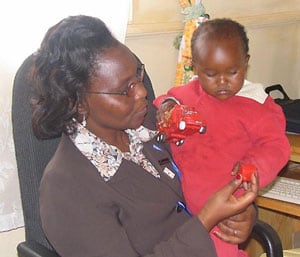
8. Tell me your favorite success story from the Child Survival Program. A story that you truly feel CSP made possible.
CSP stories are so many, I do not know which one to choose. But I would like to mention one child who was recruited into the program at 3 months. His mother had just passed away, and he was left under the care of his weak father and a grandmother who was the sole provider in the family. When a Child Survival Program started in their church, the grandmother was notified, so she brought in the baby. As time went by, the child started getting sick. Soon we found the child to be HIV positive. Then and there, the Child Survival Program staff started taking special care of this baby. Through the program, the baby received nutritional supplements, antiretroviral treatment, vaccinations against preventable childhood illnesses, as well as a treated mosquito net. The grandmother was taught how to provide the baby with proper nutrition, and slowly, the baby regained health, was up and about.
9. What is going on with this child and his family now?
The baby boy grew up to be a strong and admirable and gorgeous child. On the child’s fourth birthday the boy had to leave the program — thank God he then went to the Child Sponsorship Program. The boy now has a loving sponsor. Today he is a strong, healthy boy with a future and hope. He is well nourished, receiving education, getting medical care, and has hope for tomorrow.
If it were not for the Child Survival Program, who knows where this precious saint would be today? Maybe dead due to opportunistic infections, maybe malnourished, in and out of a hospital — but CSP saved him. God bless the Child Survival Program.
10. Why should someone become a CSP partner? What is the benefit to the partner?
Everybody should become a partner with the Child Survival Program! Supporting the program means being a part of changing a generation. Supporting CSP is giving children life, hope, a bright future, a chance in life and an opportunity to become all they would like to be when they grow up. The mothers or caregivers receive support and education, which raises their self-esteem and assures their families of an improved standard of living.
Read all the posts in the 10 Questions series.
*Compassion Togo will begin enrolling children later this year.
10 Questions With Emily Kagiri, Child Survival Ministry Director
Releasing children from poverty in Jesus’ name. It’s a simple statement that describes what we’re all about. But really, how does it work? How do we release children from poverty in Jesus’ name?
Brandy Campbell spoke with the ministry leaders of our child development model programs to give you an inside look at how we transform the lives of children in poverty. We’ll share their insights, thoughts and expertise over the next few weeks, but today we begin with Emily Kagiri and the Child Survival Program.

In 2007 Emily Kagiri moved with her husband and children from Kenya to Colorado Springs to take on the role of Child Survival Ministry (CSM) Director here at Compassion. She believes God began preparing her for this role when she was still a child herself.
1. How has God uniquely equipped you to work with the Child Survival Program?
When I was about 18 months old my grandmother was my caregiver. During this time I contracted tuberculosis (TB). There was no treatment for TB during these years, and my family had to completely depend on God for my healing. In Africa we highly believe in divine healing. What else would we do if there was nowhere to get help? While I was recovering, the government of Kenya started providing nutritious foods for the malnourished children in the community. This was my very own child survival program. I became healthy, strong and survived to face life in my world. For the rest of my life, I knew that helping babies like me was what God was calling me to do.
2. So, would you say that your childhood and healing gave you a passion for infants?
I have been there. My heart reaches out for these babies and mothers because I know if only we can have men and women giving to this program, many children will receive hope in life, many will survive the challenges of life, and women will learn who they are in God and will believe in their children.
3. You were instrumental in the success of CSP in Kenya. What made you decide to leave Africa to work with CSP on a more global level?
While I was still in Kenya, God gave me an opportunity to speak up for the children in the Child Survival Program as Compassion Kenya’s CSM director. I knew that if given an opportunity to speak up and touch the lives of women and babies at a larger scope, I would do it. My passion is to help people understand the global need, difficulties and situations of babies and pregnant mothers living in poverty in developing countries, and to show them that if only people would respond to this need many children would see their future years in life and become what they dream to become. So God decided that coming to the States would be the way to use this gracefully given potential. I only followed the leading of God — thank God He had prepared my family for this transition. The bottom line is that my being here has nothing to do with me but everything to do with God.
4. What makes the Child Survival Program unique among other organizations that work with infants and mothers?
The uniqueness of Compassion’s Child Survival Program stands out in one phrase: spiritual development. The fact that our Child Survival Program touches the spiritual being of a mother, a child, a family and a community is unique and makes all the difference in the lives of that family, baby and mother. CSP is a one-to-one home-based program in which staff members visit homes and educate mothers in the child’s own environment. It is then that the actual needs of the baby, mother, family and community will be known, seen and met accordingly.
5. Why did Compassion choose a home-based model for CSP?
The Child Survival Program is primarily home-based because this allows us to address the immediate needs of the baby and mother. When you get into a community and find that most children are malnourished, the best way to get to the root cause of this problem is to visit families in the community. During your visits, you will see and learn what children are fed and why. You also observe any cultural reasons for certain practices. Then you come up with an action plan from a knowledgeable perspective. In home visits, CSP workers teach mothers about parenting practices, including hygiene and nutrition, using their own locally available foods. Only during home visits can you assess whether what you have been teaching has been put into practice. Home visits create one-to-one relationships where mothers can confide in you and share their innermost fears and problems.
Come back tomorrow for the rest of Brandy’s interview with Emily.
Brandy Campbell is a feature writer at Compassion International. When she’s not chatting with Compassion execs, Brandy writes newsletter and web stories about Compassion’s ministry to children in poverty.
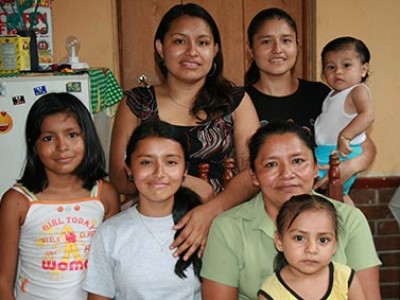
Lifting the Burden of the Family By One
I spend a fair amount of time educating people about Compassion and what we do and how we are different. I love the process, and I love helping tie all the loose-ended questions together for people. It’s pretty simple to explain what we are all all about and proceed from there…
We do child development in developing countries facilitated by the local church. We don’t use missionaries and every child is guaranteed to be taught the gospel. Whether they accept the Gospel is up to them. We work with the poorest of the poor to change the community inside out…starting with the kids and moving into the family….
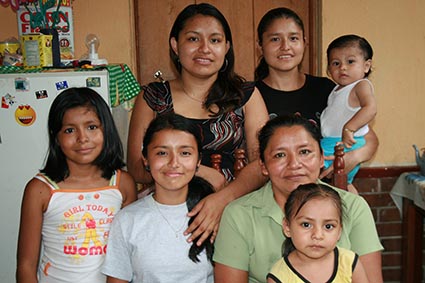
That last part is where the puzzle starts to make sense for people.
At Compassion, we build communities inside out…start with the kids and the work moves and extends into the family. Change a child’s life, change a family’s life, change the community.
Because we work with the local church, the church now has an equipping tool to reach families in ways they never could before by directly helping these little children.
You know…they get medical attention, meals, school clothes if needed, education and the Gospel. They are also taught vocational skills along with a little micro-industry from time to time.
It’s all pretty powerful when you see it in action. Not to mention the amazing impact writing letters has on these children and for you as a sponsor.
Then comes this question: Well, then how does it help the family? Oh, well…I’m glad you asked! These are just two examples.
- If the Compassion child development center is teaching the kids the importance of drinking clean water, then sometimes you will see Compassion staff pass this education on to the family: “We are giving your child clean drinking water and we want to make sure this continues at home. Here’s how to do this….”
- Another way is while these children are learning to read and write, chances are mom, dad, and other brothers or sisters don’t know how to read and write either. I’ve met several families over the years where their children have come home and taught the rest of the family how to read and write.
At the very end of the discussion with people, I can usually pinpoint when the big picture comes together.
They start talking about how they understand how helping one child helps the whole family by providing so much for their children and how cool it is to see the church literally grow in that community because so many are now accepting Christ into their lives, and then I follow up with this statement…You know, it lifts the burden of the family by one child.
At this point they get it. The light goes off and it all comes together. It’s something I came up with as my own little way of processing through the big picture. And then one day I was on a trip to El Salvador….
I walked into the home of one of our sponsored children in El Salvador with some of our artists in tow. We sat down with the family in this small 10 x 10 room where a family of five lived, slept, and ate.
Some of our group started asking questions. A little ways into the conversation, I asked the mother of the household, “how has your child being in the Compassion program helped your family?”
You know what she said? I have never heard this on a trip before.
She said, “It lifts the burden of our family by one child.”
Here’s my question for you. What does this mean to you? What would this look like in your own life if someone else had lifted the burden of your family by one child?
Something to Smile About
Meet Jeffry. He lives in Nicaragua . . . uh, wait a minute. We’ve explained that already.
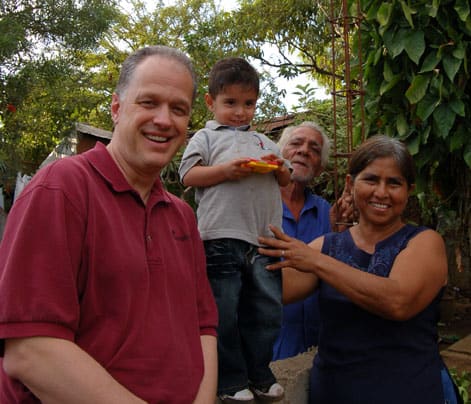
From left to right: Mark Hanlon, Compassion’s senior vice president of sponsor and donor development, Jeffry and Jeffry’s grandparents
Geography Lesson
Today, I ask you to pray for children in poverty. I ask you to cross the lines of longitude and latitude and give to those who suffer due to something as silly as geography.


